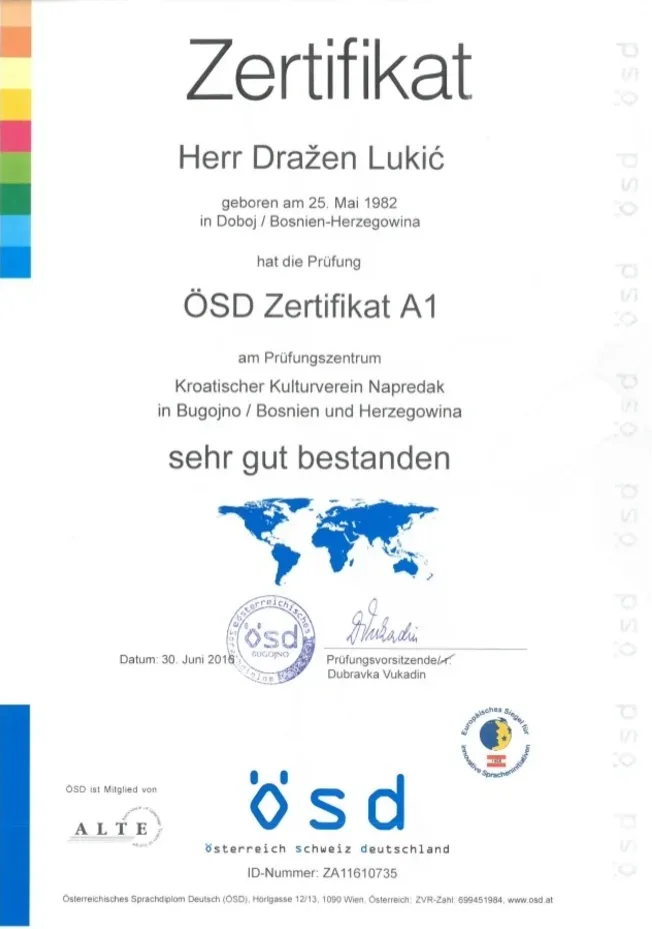Comprehending the Integrated German Model: A Comprehensive Overview
The integrated German design, frequently referred to as the "German model," is a special system that intertwines economic development, social equity, and a strong concentrate on trade training. It has gathered attention for its ability to preserve a high level of work, strong commercial production, and a robust welfare state. This short article looks into the complex layers of the integrated German design, analyzing its history, structure, advantages, and potential obstacles. By the end, readers will have a clearer understanding of this noteworthy financial structure and its implications for other nations.
Historic Context
Germany's economic structure has actually evolved considerably over the previous century. The post-World War II age produced the requirement for reconstruction, causing the establishment of a social market economy. Social market economy concepts focused on balancing free-market capitalism with social policies that guarantee reasonable competitors and a safeguard for citizens.
Over the years, the nation's financial policies have adapted to internal shifts and worldwide changes. The reunification in 1990 presented new difficulties and opportunities, triggering modifications in labor laws, training programs, and welfare arrangements. This advancement has actually resulted in the present integrated German model, which incorporates various sectors and stakeholders.
Key Features of the Integrated German Model
The integrated German design is identified by several crucial elements that work cohesively to foster economic stability and social equity:
1. Vocational Training and Education
A foundation of the German design is its dual education system, which combines classroom learning with practical on-the-job experience.
Apprenticeship Programs: Students generally get in occupation programs at age 16, where they spend part of their time in a business and the other part in school.
Industry-Specific Training: Companies play a crucial function in training workers customized to satisfy the specific requirements of their market.
2. Strong Bilateral Relationships
The integrated design assists in collaboration amongst stakeholders, consisting of:
Industry and Trade Unions: Open dialogue motivates cumulative bargaining and cooperation.
Federal government: The state produces policies that promote a balanced relationship between organization and labor interests.
3. Social Security Systems

Germany's well-being state is extensive, designed to provide citizens with:
Health Care and Pension Schemes: Universal health care, retirement benefits, and joblessness insurance are essential aspects of the well-being system.
Support for Families: Childcare support and adult leave efforts show a commitment to family well-being.
4. Economic Stability
Germany's financial structure highlights:
Export-Led Growth: With a strong manufacturing base, Germany is one of the world's leading exporters, focusing on quality and development.
Financial Responsibility: The government preserves sound fiscal policies to make sure long-lasting financial sustainability.
5. Ecological Sustainability
Recently, the German design has also integrated principles of sustainability, ending up being a frontrunner in renewable energy and eco-friendly practices.
Benefits of the Integrated German Model
The integrated German design offers numerous advantages that have made it a topic of admiration worldwide:
Low Unemployment Rates: High levels of employment training result in a competent labor force that satisfies industry needs.
Strong Economic Performance: Germany has among the largest economies in the European Union and one of the greatest internationally, with a low average debt-to-GDP ratio.
Social Cohesion: By ensuring broad access to social advantages, the model helps to minimize inequalities and supports social mobility.
Promoting Innovation: Close cooperation between companies and educational organizations fosters a culture of innovation.
Obstacles Faced by the Integrated German Model
Despite its benefits, the integrated German design is not without challenges.
Aging Population: Germany faces demographic shifts that might strain its social security system and labor force availability.
International Competition: Increased globalization and competition need continuous adaptation and development within markets.
Regional Disparities: Economic distinctions between Eastern and Western areas still persist, originating from historic elements and differing levels of investment.
FAQs
Q1: What makes the German vocational training system distinct?
A1: The dual education system integrates theoretical understanding with useful training in a work environment, guaranteeing that students acquire appropriate abilities that fulfill industry needs.
Q2: How does the integrated German design promote social equality?
A2: By supplying thorough social welfare programs and guaranteeing access to education and job training, the design creates a structure that supports social movement and minimizes financial disparities.
Q3: What role does the federal government play in the German economic model?
A3: The government regulates and facilitates cooperation between businesses and labor unions, develops social well-being policies, and invests in education and facilities to promote financial development.
Q4: Can other nations adopt the integrated German model?
A4: While aspects of the integrated German design could be adapted or embraced by other nations, the special historical, cultural, and economic contexts need to be thought about for effective application.
Conclusion
The integrated German model stands as a robust and adaptable economic framework that emphasizes employment training, social equity, and collaboration in between government, industry, and labor. While challenges exist, deutschkurs österreich have made Germany a leading example of how a balanced technique can yield considerable benefits. As other countries seek to revitalize their economies and enhance social welfare, comprehending the intricacies of the integrated German model might supply valuable insights for future policies.
